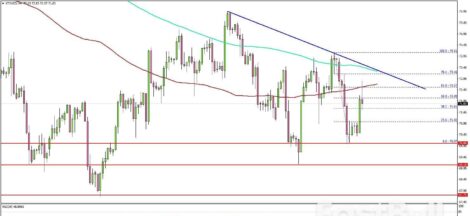By Subrata Majumder
The entire world is deepening into geopolitical tensions and increasing uncertainty in trade following the announcement made by the U.S. President Donald Trump the new tariff rates on April 2. The U.S. slapped 27 percent import tariff on India. President Trump exhilarated this as “discounted replication”, despite India imposing 52 percent and reckoned as worst tariff offender.
Virtually, the new tariff on India’s exports to USA depicts a favourable reciprocation, when compared with other worst offenders, China and Vietnam. China, 2nd biggest exporter to USA, will face 67 percent tariff (including the previous tariff of 20 percent) and Vietnam with 45 percent. The other tariff offenders are Cambodia with 49 percent, Thailand with 36 percent, Japan with 24 percent and EU with 20 percent.
A major relief to India is drugs and pharmaceutical products, which are exempted from tariff replication. India is the 3rd exporter to USA. Further, high tariff of 25 percent on automobile is unable to dent India’s auto industry as it is not the major exporter to USA. India is the 4th largest producer of cars in the world. Notwithstanding, its exports are minimal to USA.
At present, the major items of India’s exports to USA are electronics, textile and garments, diamonds and jewellery, drugs and pharmaceuticals and petroleum refinery products. Together they accounted for 57.2 percent of total exports to USA in 2023-24. Of these, the trigger in export basket was led by electronics. It accounted for 13.5 percent of total export to USA in 2023-24, as compared to merely 2.9 percent in 2018-19, Trump’s first period of Presidency.
Among these 5 major products in export basket, three are such, which are not sensitive to the collateral impact of tariff escalation. This is because of the special characteristics of these products and much higher tariffs on India’s rivals.
Electronic goods are the cases in point. India’s exports of electronics goods to USA will attract half of USA tariff on Vietnam and China. Exports from Vietnam and China will attract 45 percent and 67 percent respectively, against 27 percent in case of India.
Diamond and jewellery and garments are those items, which embrace special characteristics and market segments in USA.
Penetration of diamond and jewellery succeeded because of its long years experiences of artisans. India is known for global hub for cut and polished small diamonds. They produce high quality well cut diamonds at a lower labour cost with diverse ranges in shape, sizes and grades
Indian garment find special preferences in USA market, due to special characteristics, besides low cost. Now with the almost double tariff hike on its rivals Vietnam and China, Indian garments pose for more space in USA market. Indian garments are preferred for intricate pattern, embroidery and diverse fabrics like silk and cotton, reflecting a rich cultural heritage.
India oil refinery products are preferred in USA against others because of their affordability, owing to cheap Russian crude oil. In the post sanction period, Russian crude oil was priced to India at US$ 60/barrel, against global price of US$ 80-90/barrel.
Besides trade, there is another side of Trump’s tariff retaliation. It may turn benign to India. Low tariff hike against India, compared to its rivals, will lease a new life to FDI (foreign investment) flow in India. FDI diversifications from Vietnam and China pose for more leverages in India.
Vietnam is the 6th biggest exporter to USA. The success of a small nation like Vietnam to dump in American market relies on FDI in the country. In 2022, FDI companies in the Vietnam generated export US$ 274 billion worth of goods, representing 74 percent of the total exports of the country.
China was the main trigger for Vietnam’s exports to USA. In 2023, it was 2nd biggest foreign investor in Vietnam. Since Trump’s first term of tariff war against China, USA-China trade relation witnessed a dramatic shift to Vietnam. Eventually, USA’s trade deficit with Vietnam spurred to US$123.5 billion in 2023, which demonstrates three times more than in 2018.
According to a study by ADB/The Interpreter, the share of Chinese value addition in Vietnam’s exports to USA was 10.8 percent in 2018 in the Trump’s first term. It boomed to 27.9 percent in 2022.
India recorded a sparkling growth in electronic and drugs and pharmaceutical. But, contrary to Vietnam, growth relied more on imports from China than investment. China has been the biggest supplier to these industries. High import tariffs in India led India loose the opportunity to be globally competitive in these industries.
PLI (Production Link Incentive) scheme spearheaded new life to Make in India. Eventually, manufacturing boomed in electronics and pharmaceuticals. India’s imports of electronics and bulk drug and intermediates from China declined or remained static. During 2021-22 to 2023-24, imports of electronic goods declined by 5.5 percent and of bulk drugs and intermediates, increased marginally by 4.5 percent.
Given Trump’s spike in high import tariff on imports from Vietnam and China, which will make both these nations deterrent to export to USA, it will eventually drag FDI attraction in these countries. It may bestow hope for a sizeable shift in FDI to India .To this end, India stand for a sizable favour in attracting FDI in manufacturing and export. (IPA Service)




 BJD Alters Stance on Waqf Bill, Grants MPs Free Vote
BJD Alters Stance on Waqf Bill, Grants MPs Free Vote 